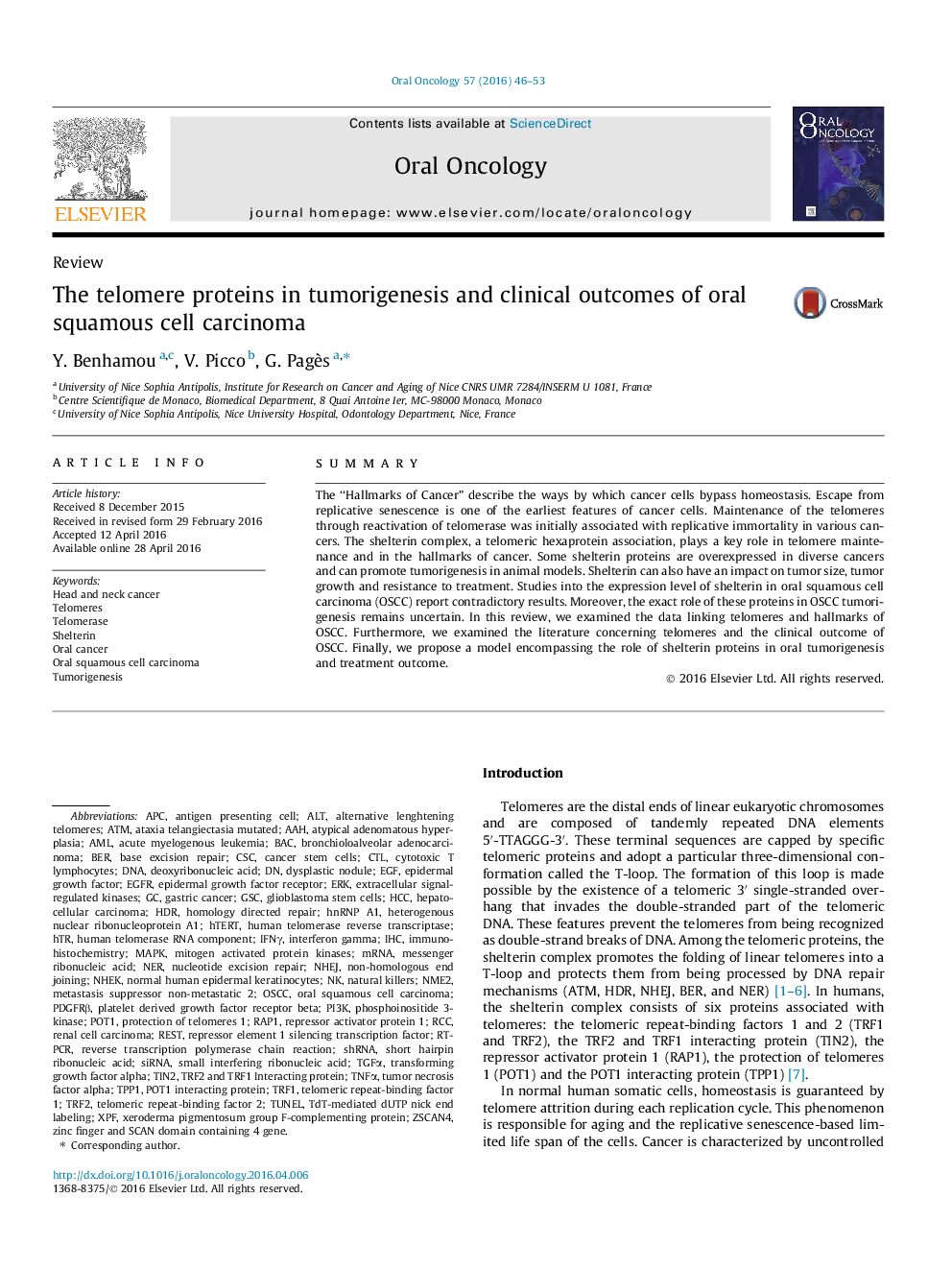| کد مقاله | کد نشریه | سال انتشار | مقاله انگلیسی | نسخه تمام متن |
|---|---|---|---|---|
| 3163739 | 1586253 | 2016 | 8 صفحه PDF | دانلود رایگان |
• The telomeres are involved in most of the hallmarks of oral cancer.
• A model for oral carcinogenesis related to telomeric proteins is proposed.
• Anticancer treatment response depends on shelterin expression in cancer cells.
SummaryThe “Hallmarks of Cancer” describe the ways by which cancer cells bypass homeostasis. Escape from replicative senescence is one of the earliest features of cancer cells. Maintenance of the telomeres through reactivation of telomerase was initially associated with replicative immortality in various cancers. The shelterin complex, a telomeric hexaprotein association, plays a key role in telomere maintenance and in the hallmarks of cancer. Some shelterin proteins are overexpressed in diverse cancers and can promote tumorigenesis in animal models. Shelterin can also have an impact on tumor size, tumor growth and resistance to treatment. Studies into the expression level of shelterin in oral squamous cell carcinoma (OSCC) report contradictory results. Moreover, the exact role of these proteins in OSCC tumorigenesis remains uncertain. In this review, we examined the data linking telomeres and hallmarks of OSCC. Furthermore, we examined the literature concerning telomeres and the clinical outcome of OSCC. Finally, we propose a model encompassing the role of shelterin proteins in oral tumorigenesis and treatment outcome.
Journal: Oral Oncology - Volume 57, June 2016, Pages 46–53
